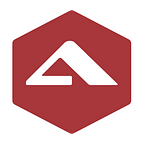LF’s Project Alvarium: Ensuring Trusted IoT Data at the Edge with DLT
Supported by Dell, IOTA, Intel, etc., this open-source project aims to unify trust insertion technologies to measure sensor data confidence.
Background: the issue of trust
As the number and variety of IoT devices grows exponentially, so does the amount of data produced and shared between different systems/organizations. However, the information gathered may be inaccurate, incomplete, outdated, tampered with, or maliciously manipulated. E.g., AI tools can be used to automatically generate fake data that looks too real for humans to tell the difference. So, how can we ensure that the information we use is valid and reliable?
Currently, the answer to this question involves using a zero-trust approach, where all data is considered untrustworthy until proven otherwise. While this option works for security, the approach can be difficult for scaling IoT systems having thousands of devices.
Understanding the problem, back in 2019, Steve Todd of Dell was actively exploring the ideas of applying trust insertion technologies to IoT scenarios, looing for ways to ensure data confidence at the edge. Eventually, the experiments within Dell led to a concept of data confidence fabric (DCF) — an architecture that could help to measure how trustworthy sensor data is as it moves from devices to apps.
In August 2019, the first DCF prototype was written by using the Go language, EdgeX Foundry, Dell Boomi, VMware Blockchain, Lightwave, etc. In October 2019, Dell teamed up with IOTA Foundation to submit the contribution of DCF’s code base to the Linux Foundation, seeding Project Alvarium. A year later, a comprehensive paper was delivered, summarizing the vision behind the project.
However, the plans behind Alvarium were put on hold due to the COVID-19 pandemic, the official wiki says. Still, in October 2020, Dell and Intel delivered a DCF proof of concept intended for use in a privacy-preserving computer vision system for smart cities. By February 2021, Dell and IOTA reengineered initial Dell’s DCF with IOTA’s Streams and Tangle to improve security and scalability.
In October 2021, Alvarium found its home at LF Edge — an umbrella organization within the Linux Foundation, working on an open, interoperable framework for edge computing. The project is currently at Stage 1 of development, “At Large.” This means that it has been accepted by the Technical Advisory Council and has a clear alignment with the LF Edge mission statement.
After LF Edge welcomed the project, during 2021–2022, the team focused on a pilot real-life DCF implementation for a biodigester in Molina, Chile. This plant processed organic feedstock, with methane reduction sensor data traveling over a DCF to the server running the Alvarium SDK. Since then, a few webinars and conference sessions shed some light on the details of the implementation.
Read our article to learn about how the project works, its first pilot implementation, and plans for future development.
